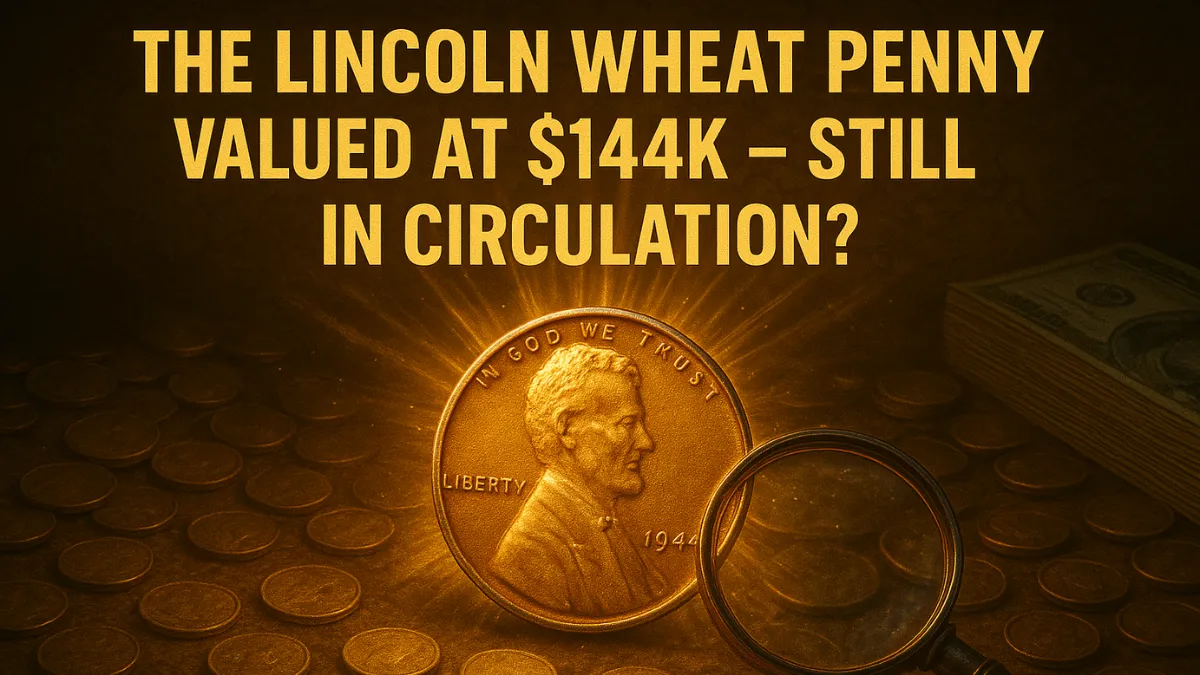The Lincoln Wheat Penny is a cornerstone of American numismatic history, striking nostalgia for millions and sparking dreams of treasure for collectors. But is it really possible that a single penny, valued at a stunning $144,000, could turn up in your pocket change today? Let’s explore the story, rarity, and the facts behind this legendary coin—and what you should look for if you want to join the hunt.
The Secret Behind the $144,000 Lincoln Wheat Penny
The sky-high value of $144,000 is tied to one exceptionally rare variety: the 1943 bronze (copper) Wheat Penny. In 1943, the U.S. Mint switched to steel pennies to conserve copper for World War II. However, a fraction of 1943 pennies were mistakenly struck on leftover bronze planchets instead of steel—creating one of America’s greatest numismatic rarities.
- Fewer than 20 to 40 known examples exist, making them incredibly scarce in any condition.
- Auction Records: A well-preserved 1943 bronze Wheat Penny has sold at public auctions for $144,000 or more, with some top specimens even reportedly reaching higher figures as interest grows.
- How to Identify: These rare coins are non-magnetic (unlike the typical 1943 steel cent), usually weigh slightly more, and have a distinct reddish-brown copper appearance instead of a silvery steel color.
Other High-Value Lincoln Wheat Pennies
While the 1943 bronze cent is the star, other Wheat Penny rarities also attract high five- and six-figure bids, especially for those in pristine “red” uncirculated condition. Top contenders include:
- 1909-S VDB – The debut year, scarce and iconic, can fetch over $150,000 in exceptional grade.
- 1944-D Steel Cent – Another WWII error; only a few exist, worth $100,000+.
- 1914-D – A major key date, especially in high grade, valued at five figures.
- 1955 Double Die Obverse – Eminently collectible, dramatic doubling, brings top dollar.
- 1943-D Bronze Cent – The only known example realized over $1.7 million at auction.
Could a $144K Wheat Penny Still Be Out There?
While some rare Lincoln Wheat Pennies do occasionally resurface—especially in old collections or coin jars—the odds of discovering a genuine $144,000 coin in everyday change are extremely slim. Most authentic 1943 bronze Wheat Pennies have already been documented and traded among established collectors.
Yet, numismatics thrives on stories of unexpected discoveries, and coins lost for decades can resurface in estates or family coin stashes.
How to Check Your Pennies: Tips for Treasure Hunters
- Focus on 1943 Cents: Look for bronze/copper-colored 1943 pennies, rather than the usual steel gray coins.
- Use a Magnet: Real 1943 bronze pennies are not magnetic; steel cents are.
- Weigh Your Finds: A genuine bronze penny weighs around 3.11 grams; the steel versions weigh only 2.7 grams.
- Authenticate Before Selling: If you think you’ve found a rare penny, seek expert authentication from PCGS or NGC before making any decisions.
- Check Other Key Dates and Error Varieties: Rarities like 1909-S VDB, 1944 steel cents, and 1955 doubled dies can all hold significant value.
Takeaway: The Enduring Allure of Lincoln Wheat Pennies
The $144,000 Lincoln Wheat Penny—especially the 1943 bronze error—remains one of the rarest and most valuable coins a collector can hope to find. While it’s highly unlikely you’ll land such a fortune in everyday change, the possibility is not zero, especially with older coin stashes or family collections. For dedicated searchers, understanding what to look for and getting potential rarities professionally checked could make all the difference between ordinary pocket change and a remarkable life-changing discovery.
